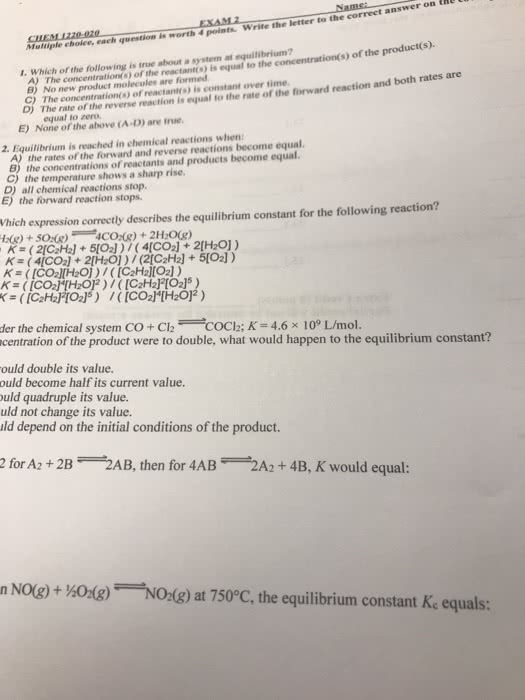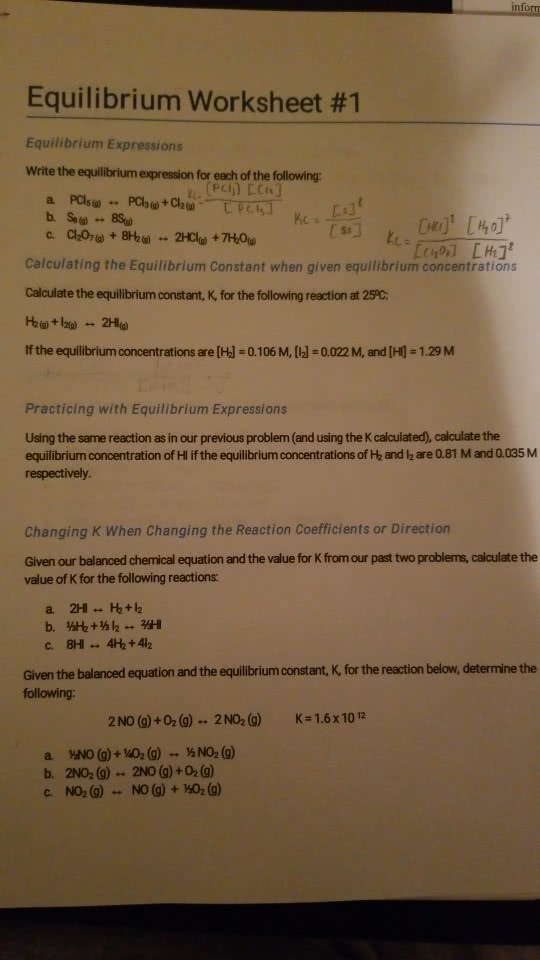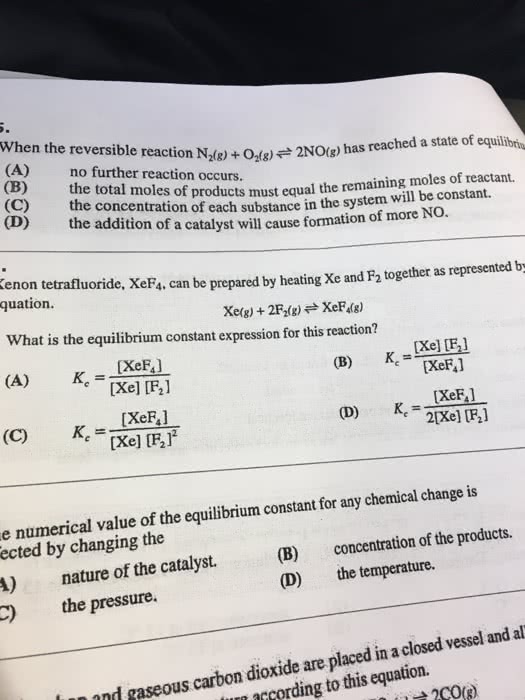CHEM 1020U Study Guide - Midterm Guide: Activation Energy, Reversible Reaction, Endothermic Process
Document Summary
13: chemical equilibrium: chemical equilibrium: the state reached when the concentrations of reactants and products remain constant over time, for example:n2o4 (g) 2no2 (g) o. When the rate of the breakdown of the reactant and the rate of the formation of the product become equal, an equilibrium state is attained and there are no further changes in concentration. Ratereactant = rateproduct = equililbrium: the equilibrium constant, kc, for a general reversible reaction: aa + bb cc + dd. The reaction favours the direction with the greater k value: the greater k value, the farther the reaction equilibria is to the right. Reactants2: k is very small, k is very large, mostly reactants (larger denominator, mostly products (larger numerator, equilibrium constant, equilibrium constant is for the chemical equation as written is for the chemical equation as written. With a small k value, this simplifies the denominator and you can ignore the x"s.





